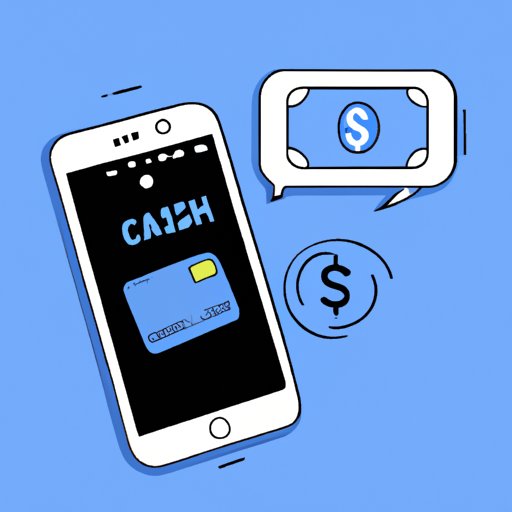
Introduction
Cash App is an easy and convenient way to send and receive money, pay bills, and manage your finances. With its simple user interface and variety of features, it’s a popular choice for people who want to manage their money from their mobile device. In this beginner’s guide, we will provide a step-by-step explanation of how to use Cash App, including setting up your account, sending and receiving money, using Cash App Cards, linking your bank account, keeping your account secure, and understanding fees.
Getting Started with Cash App: A Beginner’s Guide to Setting Up Your Account
The first step to using Cash App is to download and install the app on your mobile device. Once you have successfully installed the app, you will need to create a new account. Follow the instructions provided by the app to create a new account using your email address or mobile phone number. To unlock all the features of Cash App, you will need to verify your identity. This can be done by providing your full name, date of birth, and the last four digits of your Social Security number.
How to Send and Receive Money on Cash App: Step-by-Step Instructions
One of the most popular features of Cash App is the ability to send and receive money quickly and easily. To send money, simply enter the amount you want to send, followed by the recipient’s email address or mobile phone number. To receive money, the sender will need to know your email address or mobile phone number. You can also request money from other Cash App users by clicking on the “Request” tab and entering the amount you want to request. Another great feature of Cash App is the ability to set up automatic deposits and receive payments from your employer or other sources. To do this, simply navigate to the “Deposits” tab and follow the instructions provided.
Cash App Cards: Everything You Need to Know About Using Your Cash Card
The Cash Card is a free debit card issued by Cash App that can be used to make purchases anywhere that accepts Visa. One of the main benefits of the Cash Card is that it allows you to withdraw cash from ATMs without paying any fees. To order a Cash Card, navigate to the “Cash Card” tab in the app and follow the instructions provided. Once you receive your card, you will need to activate it by following the instructions provided in the app. You can then use your Cash Card to make purchases and withdraw cash just like you would with any other debit card.
Tips and Tricks for Using Cash App: Save Time and Effort with These Shortcuts
To save time and effort while using Cash App, there are a few tips and tricks you can use. For example, you can use the “For Sale” feature to sell items to other Cash App users. You can also use keyboard shortcuts to quickly access important features, such as the “Request” and “Pay” tabs. Additionally, there are several other useful features that can help you manage your money more efficiently, such as the ability to view your transaction history and set up recurring payments.
How to Link Your Bank Account to Cash App: A Quick and Easy Guide
Linking your bank account to Cash App is quick and easy. To do this, navigate to the “Banking” tab and follow the instructions provided. You will need to provide your bank account and routing numbers, as well as some personal information to verify your identity. Once your bank account is linked, you can transfer money between your bank account and Cash App easily and quickly.
Keeping Your Cash App Secure: Best Practices for Protecting Your Account
Keeping your Cash App account secure is important to protect your personal and financial information. To stay secure, be sure to enable two-factor authentication, which will require you to provide a verification code in addition to your password when logging in. You should also enable a required passcode, which will prevent others from accessing your account if your phone is lost or stolen. Additionally, be sure to keep your account information, including your email address and phone number, up-to-date.
Understanding Cash App Fees: A Breakdown of Costs and Charges to Watch Out For
Cash App charges a variety of fees for its services, including a transaction fee for sending money and a fee for instant deposits. You can avoid some of these fees by using standard deposits and waiting a few days for your money to arrive. Additionally, Cash App charges fees for using its Cash Card, including a fee for ATM withdrawals. Be sure to check the fee schedule carefully and read the fine print before using any of Cash App’s services.
Conclusion
In conclusion, Cash App is a convenient and easy-to-use mobile app for managing your finances. By following the step-by-step instructions provided in this guide, you can set up your account, send and receive money, use Cash App Cards, link your bank account, keep your account secure, and understand the fees associated with using Cash App. Be sure to use the tips and tricks provided to manage your money more efficiently, and always keep your account information up-to-date and secure.




